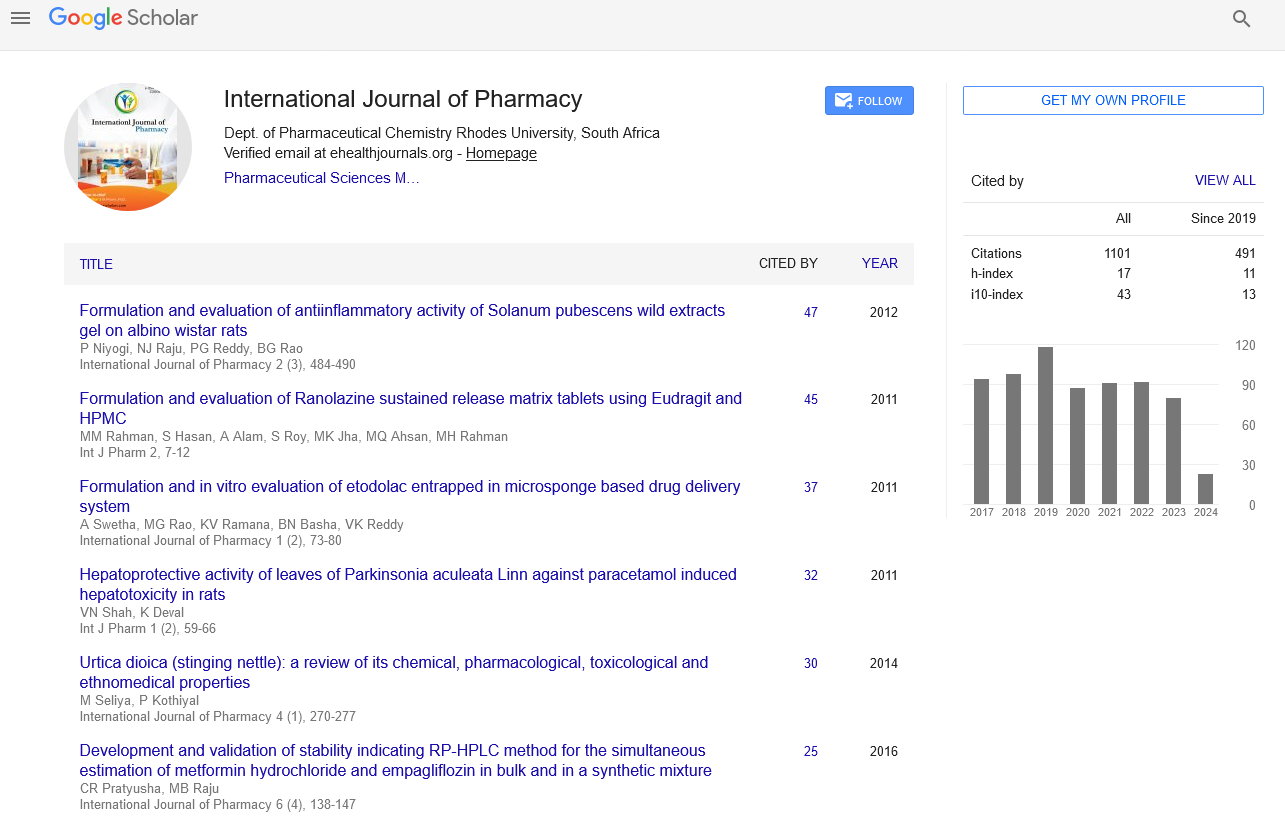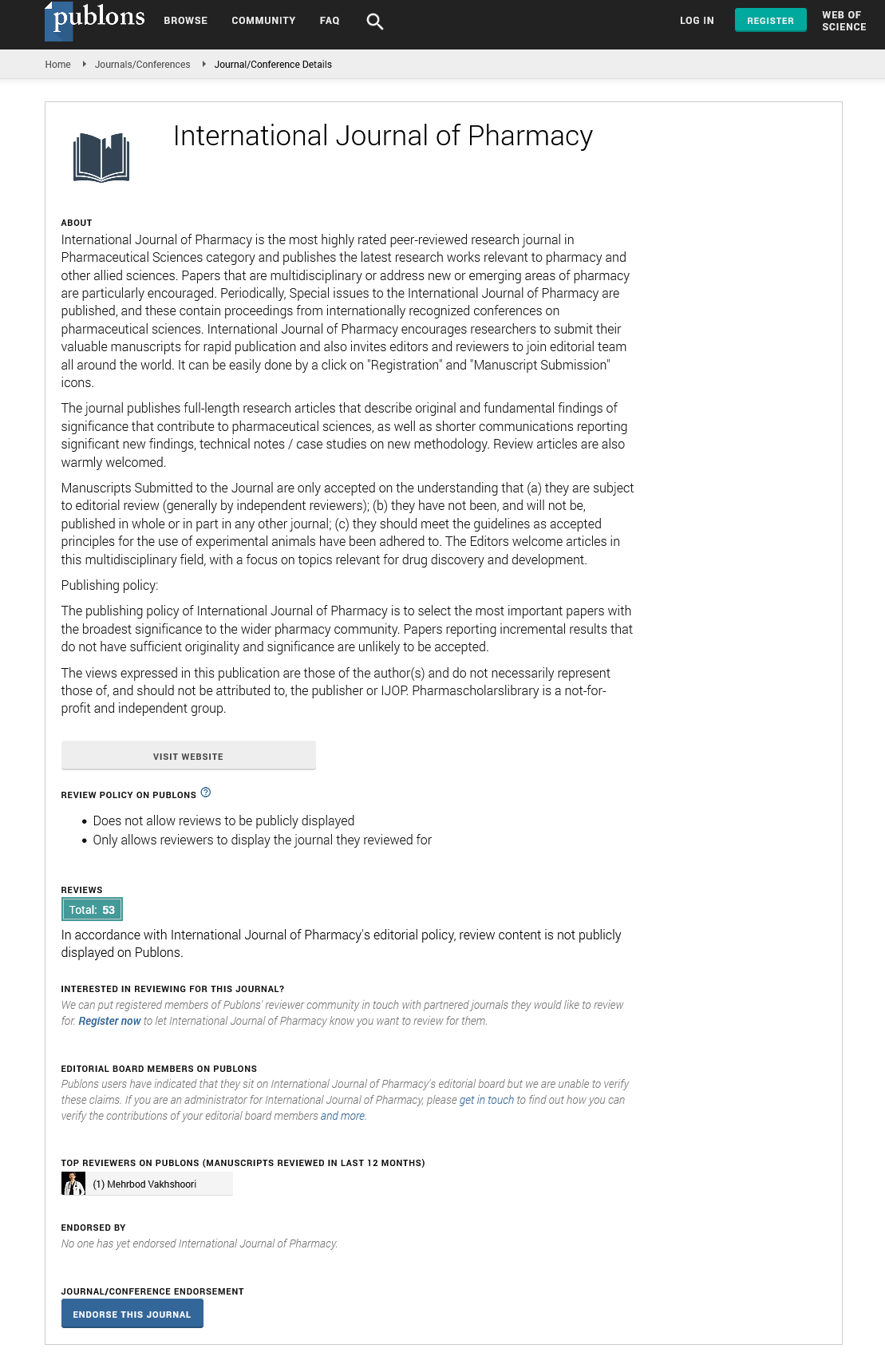HTML
Opinion - (2024) Volume 14, Issue 2
Radiation, Regulation, and Remedies: The Dynamics of Nuclear Pharmacy Practice
Roxanne Desouza**Correspondence: Roxanne Desouza, Department of Pharmacy, University of California, California, USA, Email:
Received: 22-Feb-2024, Manuscript No. IJP-24-130554; Editor assigned: 26-Feb-2024, Pre QC No. IJP-24-130554 (PQ); Reviewed: 11-Mar-2024, QC No. IJP-24-130554; Revised: 18-Mar-2024, Manuscript No. IJP-24-130554 (R); Published: 25-Mar-2024, DOI: 10.37532/2249-1848.2024.14(2).100
About the Study
Nuclear pharmacy is a specialized field within pharmacy practice that focuses on the compounding, dispensing, and management of radioactive pharmaceuticals used in diagnostic imaging studies and therapeutic procedures. It plays a critical role in modern medicine, contributing to the diagnosis and treatment of various diseases, including cancer, cardiovascular conditions, and neurological disorders. Let's delve deeper into the intricacies of nuclear pharmacy, exploring its functions, applications, and significance in healthcare.
Compounding and dispensing
At the heart of nuclear pharmacy lies the preparation and dispensing of radiopharmaceuticals, which are medications containing radionuclides. These radiopharmaceuticals emit gamma rays or positrons that can be detected by specialized imaging equipment, such as gamma cameras or PET scanners. Nuclear pharmacists are responsible for compounding these medications in a controlled environment to ensure accurate dosing and radiation safety. They must adhere to strict regulations and guidelines governing the handling, storage, and disposal of radioactive materials to protect both patients and healthcare workers.
Diagnostic imaging
One of the primary applications of nuclear pharmacy is in diagnostic imaging procedures. Radiopharmaceuticals are administered to patients either intravenously or orally, depending on the specific imaging study being performed. These radiotracers target specific tissues or organs within the body, allowing clinicians to visualize physiological processes, assess organ function, and detect abnormalities. Common nuclear imaging techniques include Single-Photon Emission Computed Tomography (SPECT) and Positron Emission Tomography (PET), which provide valuable insights into various medical conditions, such as cancer staging, myocardial perfusion, and neurologic disorders.
Therapeutic applications
In addition to diagnostic imaging, nuclear pharmacy also encompasses therapeutic applications of radiopharmaceuticals in the treatment of certain diseases. Radioisotopes with therapeutic properties, such as iodine-131, lutetium-177, and yttrium-90, are utilized in Targeted Radionuclide Therapy (TRT) for cancer treatment. These radiopharmaceuticals selectively deliver radiation to cancerous cells, minimizing damage to surrounding healthy tissues. Nuclear pharmacists play a crucial role in ensuring the safe and effective administration of therapeutic radiopharmaceuticals, collaborating closely with oncologists and radiation oncology teams to optimize treatment outcomes for patients.
Radiation safety and regulatory compliance
Given the radioactive nature of the materials involved, radiation safety is paramount in nuclear pharmacy practice. Nuclear pharmacists undergo specialized training in radiation safety principles, including radiation detection, shielding techniques, and contamination control. They must adhere to stringent regulatory requirements established by organizations such as the Nuclear Regulatory Commission (NRC) and the Food and Drug Administration (FDA) to ensure compliance with safety standards and minimize radiation exposure risks to patients and healthcare personnel.
Research and development
Nuclear pharmacy is also involved in research and development efforts aimed at advancing the field of nuclear medicine. This includes the discovery of novel radiopharmaceuticals, optimization of imaging protocols, and exploration of new therapeutic applications. Research conducted in collaboration with pharmaceutical companies, academic institutions, and healthcare organizations contributes to the evolution of nuclear pharmacy practice, driving innovation and improving patient care.
Education and training
Becoming a nuclear pharmacist requires specialized education and training beyond the standard pharmacy curriculum. Aspiring nuclear pharmacists typically pursue postgraduate residency programs or fellowships in nuclear pharmacy, where they receive hands-on experience in radiopharmaceutical compounding, radiation safety practices, and clinical applications. Certification through organizations such as the Board of Pharmacy Specialties (BPS) further validates their expertise in nuclear pharmacy practice.
In conclusion, nuclear pharmacy plays a vital role in modern healthcare by providing essential radiopharmaceuticals for diagnostic imaging studies and therapeutic interventions. Through compounding, dispensing, and management of radioactive medications, nuclear pharmacists contribute to the diagnosis, treatment, and management of various medical conditions. Their dedication to radiation safety, regulatory compliance, and ongoing research ensures the safe and effective use of radiopharmaceuticals, ultimately improving patient outcomes and advancing the field of nuclear medicine.
Manuscript Submission
Submit your manuscript at Online Submission System
Google scholar citation report
Citations : 1101
International Journal of Pharmacy received 1101 citations as per google scholar report
International Journal of Pharmacy peer review process verified at publons
Indexed In
- CAS Source Index (CASSI)
- HINARI
- Index Copernicus
- Google Scholar
- The Global Impact Factor (GIF)
- Polish Scholarly Bibliography (PBN)
- Cosmos IF
- Open Academic Journals Index (OAJI)
- Directory of Research Journal Indexing (DRJI)
- EBSCO A-Z
- OCLC- WorldCat
- MIAR
- International committee of medical journals editors (ICMJE)
- Scientific Indexing Services (SIS)
- Scientific Journal Impact Factor (SJIF)
- Euro Pub
- Eurasian Scientific Journal Index
- Root indexing
- International Institute of Organized Research
- InfoBase Index
- International Innovative Journal Impact Factor
- J-Gate

